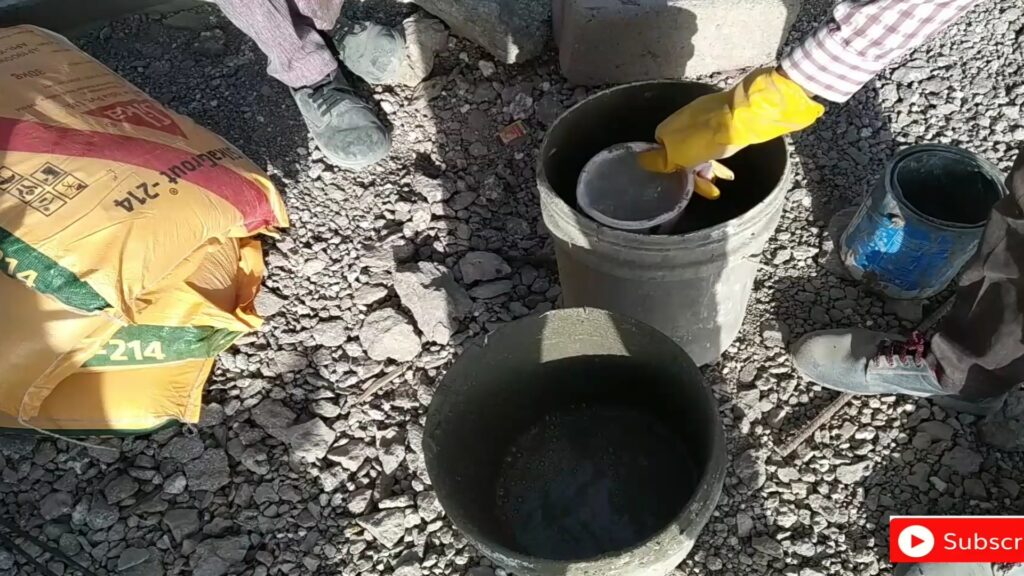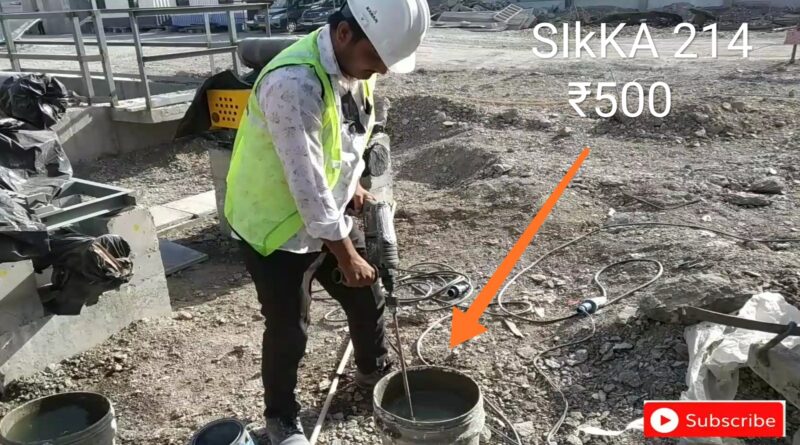What is grouting ? Process and its type
Grout is generally a mixture of cement, sand and water or chemical used to fill gaps. They are used in the repair of concrete cracks, fill seams and gaps in tiles, seal and fill gaps for waterproofing, and for soil stabilization. It is also used for giving extra strength to the foundations of load-bearing structures.

Grouts are used in a variety of application such as repair of cracks, water – stopping in submerged structures such as canals, tunnels, etc., fill seams between tiles, and for stabilizing soil. Here we have briefed about types of grouts used in the repair of cracks.
There are several different types of material used for grouting:
- Cement Grouting
- Chemical Grouting
- Bentonite Grouting
- Resin Grouting
- Bituminous Grouting
Today in this Article i am going to tell you Cementitious Grouting and Its type are :-
Type G1
This type of grout are generally for steel structures, towers, vessels, small pumps and all non-vibrating machinery, but the exact application of grout type at any given location shall be as per the relevant drawing.
The grout shall be a proprietary non-shrinkable, free-flow cementitious grout with a minimum compressive strength at least equal to that of the foundation concrete but not less than 30 N/mm2 at 7 days and 40 N/mm2 at 28 days.
All proprietary grouts (e.g. FOSROC’s ‘Conbextra GP1’ or Sikka )
Type G2
This type of grout shall be used, in general, for precast concrete structures, compressors and other heavy equipment subject to vibration and for column bearing plates of heavy structures.

The grout shall be a proprietary non-shrinkable cementitious high strength grout, e.g. FOSROC’s ‘Conbextra GP2’ ,Sikka and MC-Beauchemie ‘Emcekrete’ or similar approved by the EIC. The specific locations for application shall be as shown on the drawings.
The minimum compressive strength of the grout shall be 50 N/mm2 at 7 days & 60 N/mm2 at 28 days.
The flexural strength of the grout must exceed 9 N/mm2 at 28 days.
USAGE
- To grout bearings, machine foundations, columns joints in precast construction, etc.
- To grout anchors in concrete
- To grout cavities, gaps and voids in concrete
CHARACTERISTICS
- Easy to use (ready to mix powder)
- Easy to mix, only add water
- Adjustable consistency
- Very good flow characteristics
- Rapid strength development
- Excellent bond to Concrete
- No Segregation or bleeding
- High final strengths
- Initial expansion by gas generation
- Impact and vibration resistant
- Non-corrosive
- Not flammable, non-toxic
- Shrinkage compensated
Procedure and its Specification
Substrate Preparation
The substrate should be prepared by suitable mechanical preparation techniques such as high pressure water jetting, breakers, blast cleaning, scrabbles, etc. The concrete substrates should be pre-soaked with clean water continuously for 2 – 6 hours to ensure a saturated surface dry condition throughout the operation.
Mixing
For Flow able: Water : Powder = 0.14 to 0.16 by weight (4.2 l to 4.8 l water per 30 kg bag).
For Pour able: Water : Powder = 0.12 to 0.14 by weight (3.6l to 4.2 l water per 30 kg bag).

Mixing Time :- 3 minutes minimum
Mixing Tools
Mix grout powder mechanically in the correct ratio with water with low speed (max. 500 rpm) electric drill to avoid en training too much air.
Put around 80 to 90% of required water in the mixing drum, and then add the balance water.
Dependent on the desired consistency and flow properties, the mixing ratio can be adjusted. Don’t use concrete tilting mixer
Application Method
Pour grout immediately after mixing into the prepared openings. Ensure that air displaced by the grout can easily escape; otherwise entrapped air will prevent full contact grouting. Wet porous substrates to saturated surface dry condition.
When grouting base plates etc., ensure that a continuous and sufficient head of pressure is maintained to keep the grout flowing. To make optimum use of the products expansion properties, apply the grout as quickly as possible (within max. 15 minutes).

